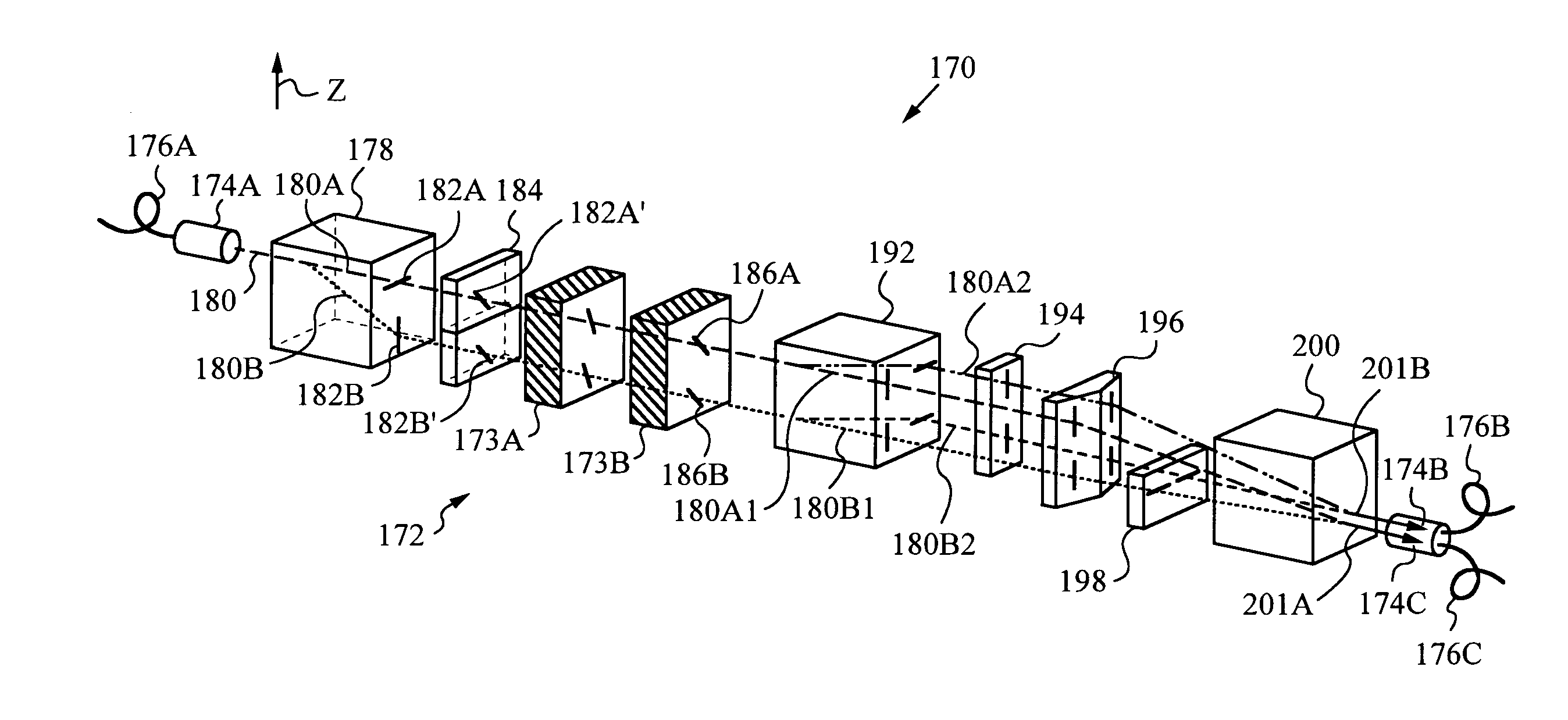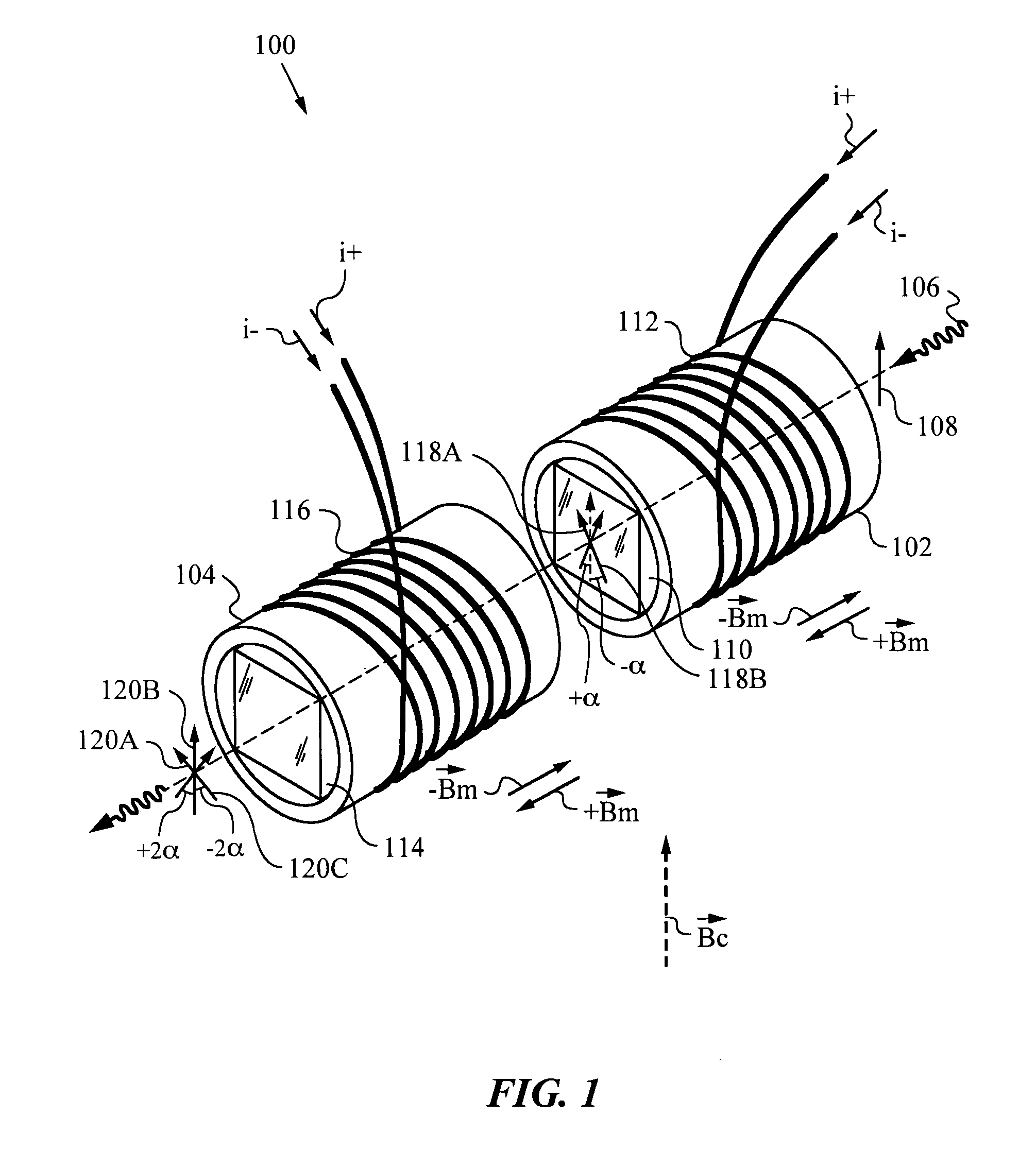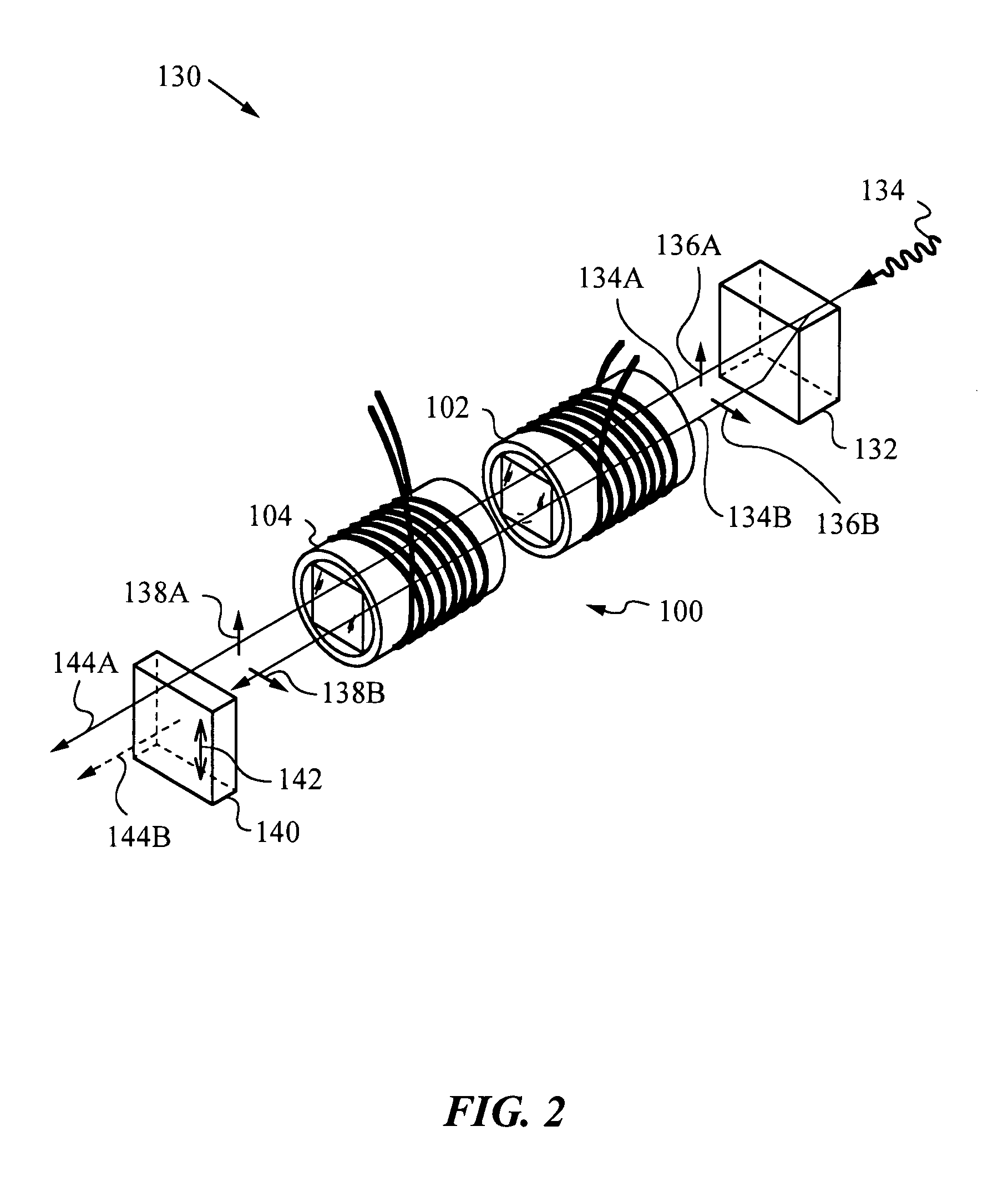Optical apparatus having a compound tri-state non-reciprocal rotator
a tri-state non-reciprocal, optical apparatus technology, applied in non-linear optics, instruments, optics, etc., can solve the problems of limiting the total number of usable wavelengths, system using expensive wdm transmitters and/or tunable lasers, and certain limits to the scalability of these schemes, etc., to achieve easy separation, low overall cost, and easy to split
- Summary
- Abstract
- Description
- Claims
- Application Information
AI Technical Summary
Benefits of technology
Problems solved by technology
Method used
Image
Examples
Embodiment Construction
[0025]Optical devices of the invention employ a compound tri-state non-reciprocal rotator 100 as shown in FIG. 1. Tri-state non-reciprocal rotator 100 is compound because it has two Faraday rotators; namely a first Faraday rotator 102 and a second Faraday rotator 104. Faraday rotators 102, 104 are in communication with each other and are arranged in series such that a light beam 106 passes through them in succession. Light beam 106 is in a linear polarization state indicated by arrow 108.
[0026]First Faraday rotator 102 has a core 110 and a field coil 112 surrounding core 110. Field coil 112 is designed for receiving a current i and applying a modulating magnetic field Bm parallel to the direction of propagation of beam 106. More precisely, a forward current i+passing through field coil 112 generates a modulating magnetic field +Bm parallel and along the direction of propagation of beam 106. A reverse current i− generates a modulating magnetic field −Bm parallel but directed against ...
PUM
| Property | Measurement | Unit |
|---|---|---|
| angles | aaaaa | aaaaa |
| angles | aaaaa | aaaaa |
| angle | aaaaa | aaaaa |
Abstract
Description
Claims
Application Information
 Login to View More
Login to View More - R&D
- Intellectual Property
- Life Sciences
- Materials
- Tech Scout
- Unparalleled Data Quality
- Higher Quality Content
- 60% Fewer Hallucinations
Browse by: Latest US Patents, China's latest patents, Technical Efficacy Thesaurus, Application Domain, Technology Topic, Popular Technical Reports.
© 2025 PatSnap. All rights reserved.Legal|Privacy policy|Modern Slavery Act Transparency Statement|Sitemap|About US| Contact US: help@patsnap.com



